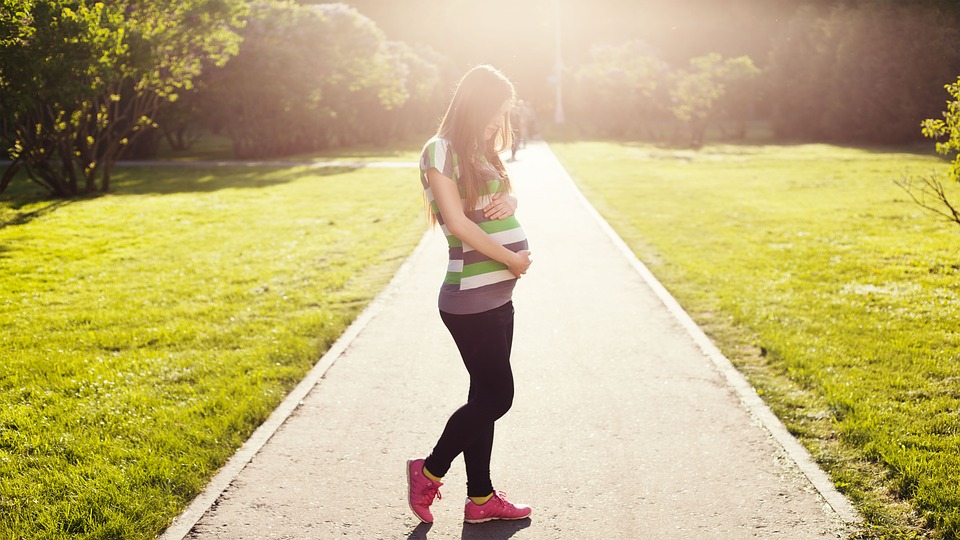What is Subinvolution?
If the contraction process is happening too slowly, it can lead to a severe condition of subinvolution, whereby one remains with an enlarged uterus even after delivery
The muscles of the womb house a small fertilised cell and slowly expand in accordance with the physical growth of the baby, giving pregnant ladies an enlarged womb, better known as a baby bump. Soon after giving birth, the uterus or the enlarged womb needs to get back to the size and shape it was, prior to the pregnancy. So, the uterus has to reduce from a ten litre volume to one that can hold only a teaspoon of volume.
The uterus contractions usually bring in the post-partum cramps or after birth pains – the most awful ones which last for over one or two days after the delivery. If the contraction process is happening too slowly, then it can lead to a severe condition of subinvolution, where one remains with an enlarged uterus.
Causes of Uterine Subinvolution
Uterine subinvolution is not a gestational problem that can be cured with some easy antibiotics and medicines but instead, it is a dangerous after-pregnancy complication that needs immediate attention and care. Here are some of the main causes of uterine subinvolution.
Retained Placenta
The birthing process occurs in three stages, with severe contractions and abdominal pain in the first stage, when the baby enters the world in the second stage and when finally the third stage in which the placenta and membranes that nurture the baby in the womb are removed. On the other hand, the site of the placenta if not cleaned properly (retained placenta tissue) can obstruct shrinking of the uterus to its original state.
Less Oxytocin Level
Oxytocin, better known as the love hormone and cuddle chemical is a hormone made in the brain and secreted down in the pituitary gland. Other than triggering sexual arousal, trust, anxiety and mother-infant bonding In females, it is the release of oxytocin in the pituitary glands that initiates uterine contractions. Lessor simply no production of oxytocin can lead to weak contractions resulting in uterine subinvolution.
Multiple Pregnancies
Having multiple babies likes twins or triplets stretches the muscles and fibres of the uterus much more than usual. This excessive stretching of the muscles can slow down the process of the uterus shrinking to its original shape and size. So, if pregnant with multiple babies, make it a point to visit your gynaecologist regularly, for her suggestions to keep the risks of subinvolution at bay.
Other Risk Factors
Some other risk factors leading to subinvolution or incomplete involution complication are macrosomia (delivering a large baby), excessive activity and workout levels immediately after childbirth, or polyhydramnios (presence of amniotic fluids in excessive amounts).
Uterine Subinvolution Symptoms
Checking on the lochia or post partum bleeding is the best sign to keep a check on whether your body is developing chances of uterus subinvolution or not. Generally, lochia bleeding begins as a heavy menstrual period then progresses to becoming lighter and indistinguishable from the regular discharge from the vagina to finally resolving on its own within a month.
However, it there is any complication in the uterus contraction, you might notice lochia flow with clotting, extended flow (more than one month), or irregular bleeding along with lochia discharge. The involution process or the shrinkage of the uterus to its pre-pregnancy normal size usually takes six weeks, accompanied with some severe cramping and abdominal cramps.
But, in case the involution process is taking longer than the usualprescribed time, then it’s better to get these symptoms of subinvolution checked. Or else, it can lead to some severe conditions like an infection or haemorrhage.
Treatment Of Uterine Subinvolution
The main cause of a severe post partum haemorrhage in females is subinvolution, It is important to take note of instances of abnormal post-partum bleeding or lochia as this needs an immediate consultation with a doctor for identification of the cause.
The high presence of a leftover placenta and tissues can be revealed through an ultrasound, which requires an urgent removal complemented with an antibiotic routine. But, if the case is not too serious, it may not require hospitalisation and will be managed through medication of prescribed drugs to alleviate the degree of uterine involution.
Also, proper rest and care in the first few months after childbirth is suggested, as suddenly pressurising the body with household chores and other physical activities along with handling the baby can also result in certain complications. However, if you wish to go on an exercise or yoga regime, then consult your doctor for the same.
